Te Iwa a Matariki
Matariki has nine visible stars according to leading Māori astronomer Dr Rangi Matamua, who has been researching Matariki for over 30 years. Each star holds a certain significance over our wellbeing and environment as seen from the Māori view of the world.
The nine stars of Matariki
The star Matariki
Matariki is the star that signifies reflection, hope, or connection to the environment, our health and wellbeing, and the gathering of people.
The word Matariki is the name of both the star cluster and one of the stars within it: other terms for the cluster as a whole include Te Tautari-nui-o-Matariki (Matariki fixed in the heavens) and Te Huihui o Matariki (the assembly of Matariki).
Matariki tāpuapua – this whakataukī (proverb) is in relation to the pools, or puddles due to the rainy weather during the Matariki period.
Matariki nāna i ao ake te kai ki runga – this means ‘the food scooped up by Matariki’; it acknowledges the connection to kai.
Matariki hunga nui – Matariki of the many. A whakataukī that acknowledges the many followers of Matariki.
Matariki ahunga nui – Matariki provider of food. Ahunga is in relation to mounds in the garden in the months to proceed, and mounds of food.
Te ope o te rua Matariki – this whakataukī has a dual meaning: one is in acknowledgement of those who have passed; the other is a salutation to an esteemed group of people within the living.
Ka rewa a Matariki, ka maoka te hinu – when Matariki rises, the fat is hot. Kereru are abundant at this time,
Ka rewa a Matariki ka rere te kanakana – when Matariki rises, the lamprey run. Kanakana or piharau (lamprey) are prolific during this time.
The star Pōhutukawa
Pōhutukawa is the star connected to those that have passed on.
Tērā a Pōhutukawa ka mōiri ki runga he pae whakamahara mō aku tau kahurangi kua ngaro.
Pīratarata mai rā koutou hei whetū i te pō, kōrekoreko mai rā hoki koutou i te rokiroki o ngā mahara mō ake tonu atu e.
When an individual dies, their spirit leaves their body and undertakes a journey along Te Ara Wairua, the pathway of the spirits. This journey ends at the northernmost point of the North Island at a place called Te Rerenga Wairua, the departing place of the spirits. The dead travel along the rocky ledge towards the ocean where an ancient pōhutukawa tree stands. They then descend down the aka (root) of this tree and disappear into the underworld.
Pōhutukawa is the star that connects Matariki to the deceased and is the reason people would cry out the names of the dead and weep when Matariki was seen rising in the early morning. It is through Pōhutukawa that Māori remember those who have died in the past year, providing an opportunity for all of us to sit in remembrance, mindfulness, and appreciation.
The star Tupuārangi
Tupuārangi is connected with everything that grows up in the trees: fruits, berries, and birds.
Ngaruru te waokū, matomato te waokū, māpuapua te puhikaioreore e tau ai ngā tamariki a Tāne, tērā koia te pua nui. Tupuārangi māu e mōmona ngā manu, ka mōmona ngā hua, ka puta ka ora!
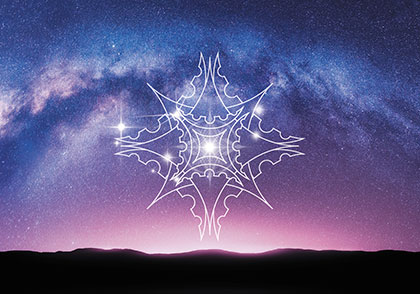
“Tupu” or “Tipu” means ‘to grow’ and “rangi” is the shortened version of “Ranginui” and means ‘sky’. Hence, Tupuārangi refers to things that grow up in the trees that stretch toward the sky.
During the rising of Matariki, kererū were harvested in large numbers, cooked and preserved in their own fat. Tupuārangi is the star that connects the cluster to the harvesting of birds and other elevated food products like fruit and berries from the trees.
The star Tupuānuku
Tupuānuku is the star connected with everything that grows within the soil to be harvested or gathered for food.
Tupuānuku ka pihi nuku, ka pihi rangi, ka makuru haere ake nei. Kia haumako roa hoki te puke ki a Rongo, i āhua mai i tawhiti. Ngā hua o Nukutū ka aohia nuitia, arā rā ngakingaki, ara rā tinaku. Hauhaketia rā te tau, he tau humi e.
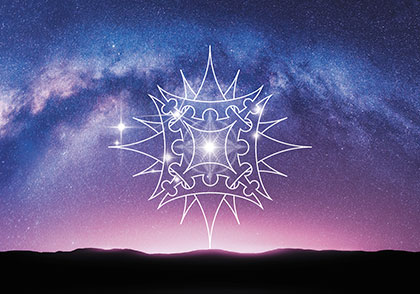
“Tupu” or “Tipu” means ‘to grow’ and “nuku” is the shortened version of “Papatūānuku” and means ‘earth’. Hence, Tupuānuku means to grow in the earth.
When Matariki sets in the western sky at dusk, this period indicates the final harvesting of the gardens as the earth begins to shutdown and whānau take shelter for the winter. This is exemplified in the whakatauki: ‘Hauhake tū, ka tō Matariki’ or ‘Lifting of the crops begins when Matariki sets’.
The star Waitī
Waitī is connected with all fresh water bodies and the food sources that are sustained by those waters.
Waitī ki runga. Waitī ki raro, e rere nei ō wai hei manapou mō te whenua, hei oranga mō te tangata, hei kete kai mā te iwi. Kōriporipo tonu nei te ia o te awa, māreparepa ana ngā roto, kōrengarenga te puna a Tāne-te-waiora, he koira!
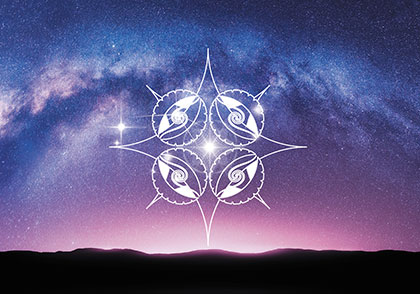
Wai means water in te reo Māori, and Waitī is the star that is connected to fresh water and all the creatures that live within awa (rivers), waipuna (streams), pūkaki (streams), kūkūwai (wetlands) and roto (lakes). As the waters flow, Waitī sees how they support us, provide for us, connect us, and sustain us.
Waitī and Waitā are Matariki’s twins. Papatūānuku knew that they would be able to care for the smallest and fastest of creatures because they know about being a team. When we see these two stars in the sky, we are encouraged to join in and support each other.
Waitī (aka Maia) is the fourth-brightest star in the Matariki star cluster, after Matariki, Tupuārangi and Waipunarangi. Waitī also means to be sweet or melodious. “He reo waitī” is a saying used when admiring a person with a melodious voice.
The star Waitā
Waitā is associated with the ocean and food sources within it.
Tērā te marae nui a Kiwa te kānapanapa nei i raro i a koe Waitā. Hīia mai rā ki runga te tini a Ikatere, rukuhia ki tai, kohia ki tātahi hei kai mā te tini o uta. Ka hiki mata te tapuwae a Tangaroa! Koia au nui, koia au roa, koia moana tuarangaranga koia moana i āio.
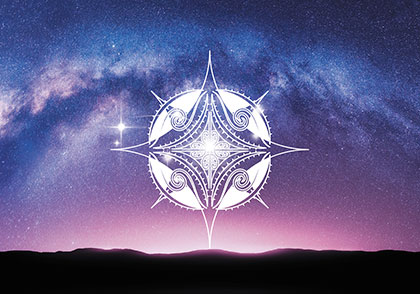
In te reo Māori, ‘wai’ means water. In this instance ‘tā’ refers to salt, similar to the word ‘tōtā’ meaning sweat. Thus, Waitā refers to bodies of salt water. It is said that, when Waitā is strong and bright during the rise of Matariki, fishing will be good during the year ahead. Conversely, if it is weak and obscured, fishing may not be as plentiful.
Waitī and Waitā are Matariki’s twins. Papatūānuku knew that they would be able to care for the smallest and fastest of creatures because they know about being a team. When we see these two stars in the sky, we are encouraged to join in and support each other.
Waitā is also known as ‘Tauri’ and ‘Taygeta’.
The star Waipuna-ā-Rangi
Waipuna-ā-Rangi is connected with the rain.
Haramai te kōnehunehu! Haramai te hāuaua, Haramai te tarahi! Haramai te patapataiāwha!
Takataka mai i te kōmanawa o te hei tapu, whāinumia e koe e Waipuna-ā-Rangi ka tupu te whenua, ka tupu te tangata.
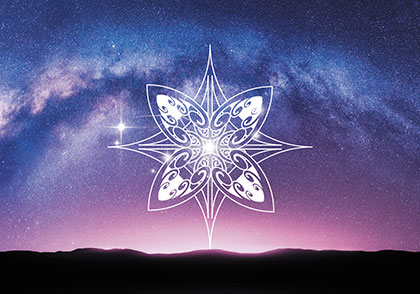
There are two stars within the Matariki cluster which link Matariki to the weather: Waipuna-ā-Rangi and Ururangi. The appearance of these stars in the morning of Pipiri would forecast the weather for the new year ahead.
Waipuna-ā-Rangi translates as ‘water that pools in the sky.’ Māori have names for a massive variety of rain and weather characteristics. For example, the pooling of water on the ground caused by heavy and persistent showers of the winter months are often referred to as ‘Matariki tāpuapua.’
The star Ururangi
Ururangi is the star connected with the winds.
E Ururangi whakamāriretia te atua matakerepō koi pūkerikeri mai koi haurokuroku mai, koi huripari mai. Engari kē kia hau kōanga, kia kōtengitengi kia purea ai au, kia whakahauoratia ai au.
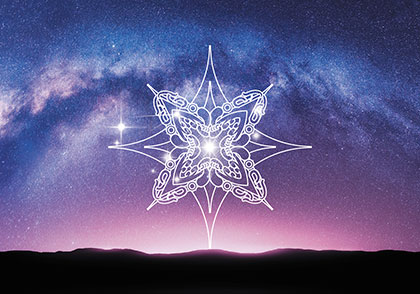
There are two stars within the Matariki cluster which link Matariki to the weather: Waipuna-ā-Rangi and Ururangi. The appearance of these stars in the morning of Pipiri would forecast the weather for the new year.
Ururangi means ‘the winds of the sky’. Ururangi is the star which indicates the nature of the winds for the year. Māori have always maintained a keen interest in the wind as we travelled here by harnessing its power. There are names for all of the various types of winds in te reo Māori.
The star Hiwa-i-te-Rangi
Hiwaiterangi is the star connected with granting our wishes and realising our aspirations for the coming year.
Hiwa nui, Hiwa roa, Hiwa pūkenga, Hiwa wānanga! Hiwaiterangi tēnei e korou o te manawa koronga, tēnei te āwhero o te manako nui. Horahia nuitia mai ngā hua tuawhiti mātinitini o te tau. Purutia e au kia mau te angitū, tāwhia te mooho kia ita! Ka puta ki te whai ao, ki te ao mārama.
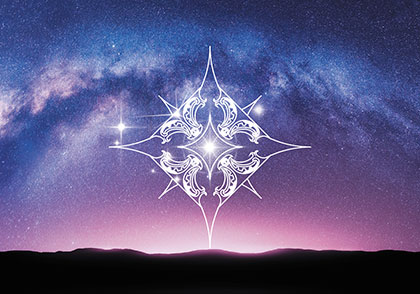
Hiwa-i-te-rangi is connected to the promise of a prosperous season. “Hiwa” means “vigorous of growth”. It is to Hiwa that Māori would send their dreams and desires for the year in the hope that they would be realised, similar to the notion of wishing upon a star or making a new year’s resolution.
It was believed that if Hiwa-te-rangi were bright in the sky during Matariki then hopes and aspriations for the year might come true. This is exemplified in the following karakia:
Ko Hiwa
Ko Hiwa nui
Ko Hiwa roa
Ko Hiwa pūkenga
Ko Hiwa wānanga
Takataka te k`āhui o te rangi
Koia a pou tō putanga ki te whai ao
ki te ao mārama.
In Greek mythology Hiwa is known as Calaeno, and although not as bright as the other stars, it actually has about 9-10 solar masses and a radius 4.4 times that of the Sun.